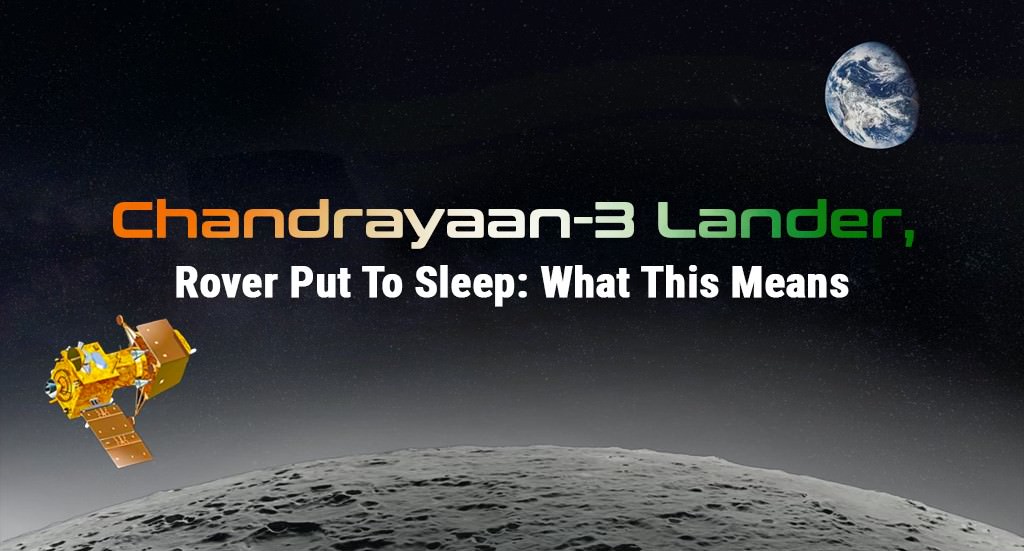After the successful soft landing of Chandrayaan-3 and the rover roaming for a distance of over 100 metres on the moon, ISRO announced that sleep mode had been induced for the Pragyan rover on September 2. Today, the space organisation announced that the lander Vikram has also been put into sleep mode. ISRO chief S Somnath had confirmed earlier that the Chandrayaan-3 rover and lander would be put to “sleep” to withstand the night on the Moon.
India’s lunar rover has finalised its journey on the moon’s surface and has entered a hibernation mode in under a fortnight following its momentous landing close to the lunar south pole, all within a span of less than two weeks since its groundbreaking landing in the vicinity of the lunar south pole, according to India’s space mission announcement.
Departing from the Satish Dhawan Space Centre on July 14, 2023, Chandrayaan-3 accomplished a remarkable feat, marking India as the fourth nation to achieve a successful lunar landing and the pioneer in doing so in the proximity of the moon’s southern pole. The core aim of this mission is to investigate the presence of water and analyse various aspects of the lunar surface, such as thermal characteristics and the composition of the lunar topsoil.
The mission has verified the existence of sulphur, iron, oxygen, and various other elements on the moon. The rover’s impressive 100-meter traverse underscores the Indian Space Research Organisation’s (ISRO) complete proficiency in ensuring secure lunar landings and effective surface exploration.
Anticipated to function solely for a single lunar day, equivalent to 14 Earth days, the Chandrayaan-3 lander and rover are in optimal condition. At present, the battery is at maximum charge, and the solar panel is positioned to capture sunlight during the upcoming sunrise, which is projected for September 22, 2023. The receiver remains active, with high hopes for a successful reactivation to undertake another round of tasks, as expressed in the statement.
Upon the conclusion of their mission duration, the lander and rover will undergo decommissioning procedures and remain on the lunar surface.
“Our scientific objective is completely met and in fact, it exceeded our expectations and this is why we are all very happy. Our director of URSC and chairman ISRO and all centre directors who have been guiding us are all very satisfied,” said P. Veeramuthuvel, the project director for the Chandrayaan-3 mission, prior to the activation of the sleep mode for the lander.
Chandrayaan-3 Mission:
— ISRO (@isro) September 2, 2023
The Rover completed its assignments.
It is now safely parked and set into Sleep mode.
APXS and LIBS payloads are turned off.
Data from these payloads is transmitted to the Earth via the Lander.
Currently, the battery is fully charged.
The solar panel is…
The moon, encompassing its southern polar region, bears the scars of ancient impact craters dating back millions of years. These craters appear to have been preserved over time, owing to the moon’s absence of tectonic activity and atmosphere, which would have otherwise reshaped its surface. The prevalence of these craters, including some that are so profound they remain forever shrouded in darkness, contributes to the complexity of conducting landings and operations at the lunar south pole.
This is just the beginning for many successful missions to come by India, the moral boost by this successful output has lifted the trust in the scientists which will eventually result in outstanding projects.
Tricolour to captivate the earth and beyond!








